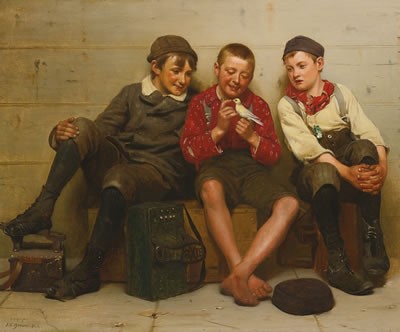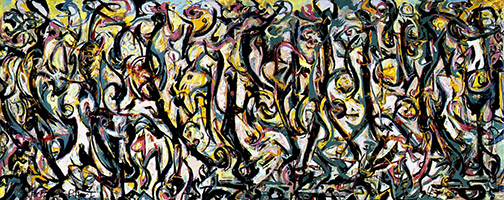All of us know someone with a seemingly effortless sense of style. It’s usually a woman, someone to whom you could give a man’s old tuxedo jacket, a peasant blouse, a tartan skirt, and combat boots and say, “Make an outfit out of this.” She would roll up the jacket’s sleeves, pick the perfect jewelry and accessories, and wear the resulting costume with such panache that she would be the embodiment of chic.
Most women who tried to do something like that, however, would look like a walking rummage sale, while any attempt on my part to assemble some kind of male equivalent to that look would cause my daughters to have another of their increasingly frequent discussions on What To Do About Dad Before He Does Something Outright Dangerous. There are men, however, who can pull it off. I remember chatting with the painter Wolf Kahn at a gallery opening many years ago. He was wearing a linen suit of pale olive, paired with a dark purple shirt and a bright orange tie. The combination pushed right up to the edge of outrageousness but didn’t fall in, and the effect, coupled with his silver hair, was stunning. (A lesson here – artists can often get away with things that normal people cannot.)
All of which is simply a lead-in to a discussion of style when it comes to collecting art. There are some combinations of styles which have a long history of going together. The exhibition of French cubist painting with African sculpture, for example, goes back to the earliest days of cubism. The pairing of folk sculpture with American modernism can likewise reveal aesthetic affinities. But cubist art was influenced by African masks, and many American modernists valued and collected folk art, so the effect is not jarring. Some styles do not play well with others.
Consider, for example, the work of John George Brown, whose paintings of shoeshine boys were very popular in later 19th century America.

How could you exhibit a painting like the one above next to one, say, by Jackson Pollock? Even trying to view them together on your computer screen risks cognitive dissonance on a grand scale. It isn’t just for historical reasons that curators put them in separate galleries in museums.

Unless you are a collector with a sense of style like the hypothetical fashionista mentioned in the beginning, it might be wisest to concentrate your collecting, both in painting and in furniture, in one or two areas that can complement each other. Abstract Expressionist paintings will probably go well with the clean lines of mid-20th century Danish modernist furniture; an Abstract Expressionist painting hung over a Herter Brothers sideboard – not so much. Works by different artists who were part of the same general artistic movement can make a strong, harmonious effect when hung together. Displaying them with furniture and other decorative arts from the same period can strengthen the effect still further. If that is not possible, then simple furniture in neutral shades is probably best.
One caveat, however. It’s your collection, and the only reason it should be there is to bring you pleasure. If you have a minor or off-beat painting that you simply like for personal reasons, you should hang it with the rest of your works. It will add a note of quirkiness that can make for a more interesting collection. “Taste is an individual thing,” wrote Kenneth Rexroth. “If it is not wide-ranging and erratic, captious and unpredictable, it is not taste but snobbery.”
In the end, you should buy the best works you can, light them well, and then let them make their case to the people who see them. If the art is good, it will dominate almost any surroundings. I remember visiting a superb private collection of Surrealist art during my grad school days. The owners were a couple who were well-enough off but not super rich. They had spent the previous 30 years building their collection, concentrating on one artistic movement and never missing a chance to trade up. I was having a drink with the husband after my admiring tour of the collection, when he told me, “If you’ve got great art, nobody notices the furniture.” On my way out, I cast a passing eye on the sofa and noticed for the first time that it had been “well loved” and had a few worn corners. The collector was right – I would never have noticed it without his remark. To adapt an old Ad Reinhardt quip, furniture is what you bump into when you back up to look at the paintings. Let’s talk, and I’ll help you get some art like that.

